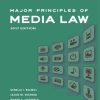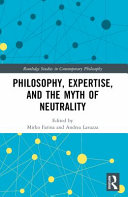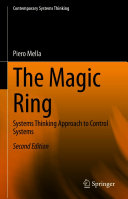The Myth and Magic of Library Systems 1st Edition by Keith J Kelley ISBN 0081000766 978-0081000762
$50.00 Original price was: $50.00.$25.00Current price is: $25.00.
The Myth and Magic of Library Systems 1st Edition by Keith J. Kelley – Ebook PDF Instant Download/Delivery: 0081000766, 978-0081000762
Full download The Myth and Magic of Library Systems 1st Edition after payment

Product details:
ISBN 10: 0081000766
ISBN 13: 978-0081000762
Author: Keith J. Kelley
The Myth and Magic of Library Systems not only defines what library systems are, but also provides guidance on how to run a library systems department. It is aimed at librarians or library administrations tasked with managing, or using, a library systems department.
This book focuses on different scenarios regarding career changes for librarians and the ways they may have to interact with library systems, including examples that speak to IT decision-making responsibilities, work as a library administrator, or managerial duties in systems departments.
- Provides guidance on how to run a library systems department
- Focuses on different scenarios regarding career changes for librarians and the ways they may have to interact with library systems
- Includes sample scenarios that speak to IT decision-making responsibilities, work as a library administrator, or managerial duties in systems departments
Table of contents:
Acknowledgments
About the author
Preface
A missive to administrators
A missive to library IT department heads and library IT administrators
A missive to new librarians in IT and students
A missive to library school faculties and administrators
A missive to IT committee members and other engaged library employees
List of figures
1: Atlantis wasn’t a magical place and library systems are just library IT
Abstract
1.1 World building and the creation of systems
1.2 How IS turned into IT
1.3 Library systems are IT minus two things plus those same two things
1.4 Library roles are specialized today, so are IT roles
2: Creatures of ancient myth: The Titans and the systems librarian
Abstract
2.1 In the land of the blind, the one-eyed librarian is king
2.2 Even specialized MLIS programs don’t provide IT fundamentals
2.3 You meant automation librarian, didn’t you? Say yes
2.4 The disappearing act: Making your own position obsolete
3: Customers, patrons, users, and unruly mobs
Abstract
3.1 Ignorance, repetition, and conflicting priorities: Why the customer isn’t in charge
3.2 Don’t ignore 10,000 people to serve one person
3.3 Dealing with problem customers
3.4 Your IT unit is a therapist’s couch and priest’s confessional
4: Reading users’ minds
Abstract
4.1 Divining what happened from incomplete information
4.2 Knowing the common errors and common resolutions
5: Sleight of hand: Service or the appearance of service
Abstract
5.1 Resources versus service levels: An exercise
5.2 [insert thing] as a service
5.3 Tiered helpdesk, just like tiered reference
5.4 Using technology the way it was intended
5.5 Teach your users how to Google their own solutions
5.6 Don’t share complete information, share popular information
5.7 Apologize like the user is your significant other (it doesn’t matter if he or she is wrong)
5.8 Pretend your user is smarter than you: Ask stupid questions
5.9 You can’t over-communicate
5.10 Stop the bleeding instead of applying bandages
5.11 Do a thing well before you do a thing twice
5.12 Do a thing well before you do more things
5.13 Don’t do a thing if you can’t do it well
5.14 Set your IT unit’s priorities: An heuristic for calculating impact
6: Taking on apprentices: Educating your customer base
Abstract
6.1 Prevention: You can lead a horse to water, but can you teach a user to fish?
6.2 Self-documenting interfaces, teachable moments, and point of need help
6.3 Train the trainer and online videos (clever ideas for lazy cheapskates)
6.4 Skills and inventory assessment
7: Do the impossible: Slaying dragons without time, people, or money
Abstract
7.1 Redefine the problem
7.2 Triage the hell out of the problem
7.3 Solve the visible tip of the iceberg
7.4 To hell with it (Or India): Outsource
7.5 Whatever, just move the deadline
7.6 If all else fails throw money at the problem
8: Adventure party makeup: Building an IT staff
Abstract
8.1 Looking for group: Roles that make a well-rounded organizational structure
8.2 Peons, goblins, house elves, and students
8.3 Automation and enterprise computing
8.4 Deskside support, desktop productivity, desktop computing, and helpdesk
8.5 Cloud computing and server-side computing
8.6 Character classes and combining roles (you can do that, sort of)
8.7 So, you’re hiring a [insert position here]
8.8 Job postings: Knowing the magic words
8.9 Training, professional development, and research: It’s different
9: The ritual: Analyzing problems, providing solutions
Abstract
9.1 Interview customers for their perceived needs
9.2 Come up with a few pretty solutions (and one ugly one too)
9.3 Project planning and management
9.4 Smaller tasks and other tricks
10: Arcane strategy: Following the magic rule system
Abstract
10.1 Eliminate redundancy, but also single points of failure
10.2 Make sure everyone everywhere is doing everything efficiently
11: Predicting the future
Abstract
11.1 Looking at IT’s and the private sector’s past
11.2 Technology forecasts, consultants, and pundits
12: They flow through us, around us, bind us together
Abstract
12.1 Integrated library systems and the things that replace them
12.2 Other library-specific software: A bestiary
13: Omniscience: Knowing all things
Abstract
13.1 Vendor webinars and conference sessions
13.2 Documenting your own setup and vendor documentation
13.3 Reading articles
13.4 YouTube: How to do everything
13.5 Knowing everyone’s job better than they do
14: Superpowers you could possess
Abstract
14.1 Soothsayer: Reading body language and microexpressions
14.2 Mind control and other dark arts: The tools of persuasion
14.3 Astral projection: Being physically in one place and mentally another
14.4 Superhuman stamina: Long days with minimal rest
14.5 Telekinesis? Solving problems by proximity
14.6 Chronomancer: Manipulating time
14.7 Casting mirror image: More people by using smartphones, large monitors, etc.
14.8 Lifehacker. Yes, the site
15: Convening the council: Meetings
Abstract
15.1 This is your life now: Avoiding and attending meetings
15.2 Scheduling methods and strategies
15.3 Preparing versus winging it
15.4 Running meetings
15.5 Attending briefings and webinars when you already know everything
15.6 Levitation: Staying above it all
16: The crystal ball: Reporting, data mining, and assessment
Abstract
16.1 Document and review everything
16.2 Big data, profiles, and personalization
16.3 Privacy, paranoia, and assessment
16.4 Canned reports and on-demand reports
16.5 Ad-hoc reports and the bane of custom local code
16.6 Using UNIX command line magic to conjure instant reports
16.7 Reports from the Herald: Department reports
17: Spellbook: Helpful tips, strategies, and solutions
Abstract
17.1 How budgets work
17.2 Using one-time funds for IT (and when not to)
17.3 Creating a technology plan
17.4 Software selection methodology
17.5 Flat decision-making structures: Getting a consensus
17.6 Balancing incompatible policies, procedures, and contracts
17.7 TCO: When technologies will save you money and when they won’t
17.8 The cost benefit analysis of custom local code
17.9 What to expect when you’re expecting to fail
17.10 Visiting the pantheon: Things librarians think they do well but should ask IT people for help
Appendix: Magic words your coworkers might be misusing—an un-thesaurus
References
Index
People also search for:
library myths
the myth of the library of alexandria
the myth of library neutrality
the magic library
library of the world’s myths and legends
Tags: Keith J Kelley, Myth, Magic, Library Systems
You may also like…
Politics & Philosophy - Major Branches of Philosophical Study
Philosophy, Expertise, And The Myth Of Neutrality 1st Edition Mirko Farina
Uncategorized
Formula A Driven World Novel The Driven World 1st Edition Jm Kelley & Kb Worlds [Kelley
Politics & Philosophy
Computers - Hardware
The Magic Ring Systems Thinking Approach to Control Systems 2nd Edition Piero Mella
Romance - Fantasy
Behind Amber Eyes The Elderhood Book 1 1st Edition Kristina Kelley
Science Fiction - Fantasy Fiction
Worthy of Magic Ancient Magic 4 1st Edition Stephany Wallace
Biography & Autobiography
Fantasy - Other Fantasy Fiction Categories
Rough Justice 1st Edition by Armstrong 1315410397 9781315410395












